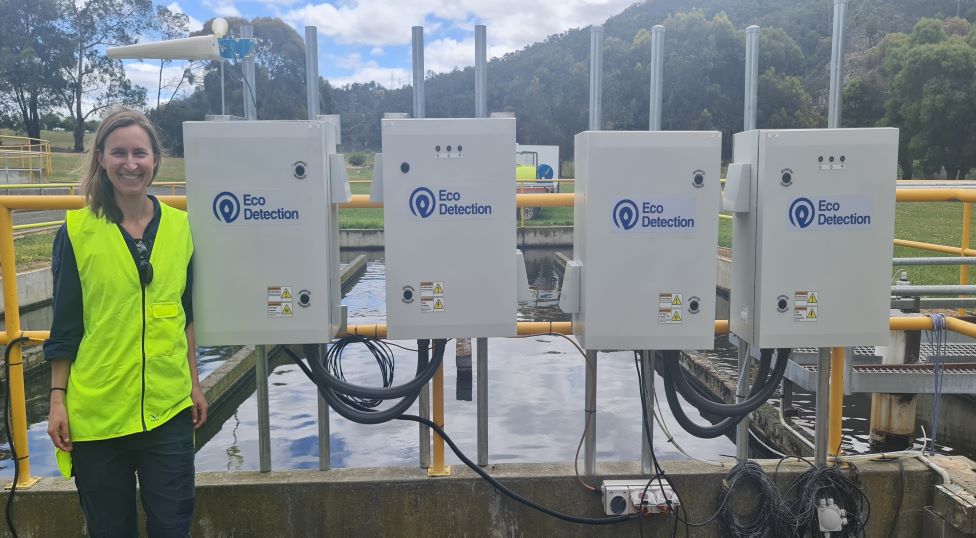MELBOURNE, AUSTRALIA – 20 December 2022 – Eco Detection Pty Ltd (Eco Detection or the Company), a private company providing innovative automated water quality monitoring solutions, is pleased to announce the commercial release of Eco Detection Ion-Q+ (Ion-Q+), a new product that expands the capabilities of its world-first water intelligence platform to help optimize operations in municipal, industrial and environmental applications.
Traditionally, water testing is labour intensive and costly, involving manual sample collection and laboratory analysis, resulting in a less than optimum reactive response to critical challenges by water operators. Eco Detection’s fully integrated system automates water testing, analysis and reporting to provide real-time laboratory-grade data, enabling proactive decision-making to meet sustainability and compliance standards and improve efficiency.
Customer applications for Ion-Q+ cover the wide range of verticals involving the regulated use and discharge of water and include the multiparameter monitoring of treated discharge and ammonia-based aeration control in wastewater treatment plants for the optimization of energy to reduce costs and GHG emissions, and nutrient analysis in aquaculture operations to ensure compliance and water quality monitoring in fish pens and adjoining environments.
The expanded Ion-Q+ system was installed at TasWater’s wastewater treatment plant located at New Norfolk in Tasmania in early December 2022 where Eco Detection has been monitoring for nutrients in treated discharge into the catchment for the last 12 months as part of the extensive Derwent Estuary Program.
Wastewater treatment plant energy consumption and GHG emissions reduction
Eco Detection has been automating the monitoring of discharged and leached nutrient loads entering catchments and contributing to toxic algal blooms in Australia and New Zealand for more than two years, demonstrating the benefits for more timely action and improved operational efficiencies. Wastewater treatment plants (WWTP) are energy intensive operations consuming between 1% and 3% of global energy output. 1 The cost of electricity is up to 40%of a plant’s total operating costs. Typically, of these costs, the use of mechanical aerators, blowers and diffusers designed to introduce oxygen into the wastewater accounts for more than 50% of the WWTP’s energy consumption.2
Nitrification is an essential process in the nitrogen cycle of wastewater treatment systems, with the concentration of ammonium indicating the efficiency of the process. Eco Detection’s Ion-Q+ can provide feedback for aeration control adjustments and potential cost minimization strategies by automating the laboratory-grade measurement of ammonium; more aeration provided when ammonium is high, less when little or no ammonium is present. A recent paper suggests energy consumption can be reduced up to 44% with the implementation of real-time monitoring in the treatment process. 3
In commenting on the monitoring concept, Dale de Kretser, a wastewater specialist with professional services firm, GHD said, “It is well known that flows and ammonia loads entering a treatment plant fluctuate throughout the day. Therefore, it follows that any system that can track ammonia concentration and adjust the aeration system to suit the demand will be more efficient than traditional control methods which use a constant set point.”
Eco Detection’s Ion-Q+ is self-calibrating and resistant to biofouling providing customers with a superior real-time data solution that can help manage wastewater processing to meet permit requirements, lower costs and minimize emissions.
Automated nutrient measurement in aquaculture operations
Water quality management is one of the essential management tasks in the growing aquaculture industry. As a waste product of aquatic life, ammonia can be toxic to fish and aquatic plants at levels as low as 0.5 mg/L. Optimum water quality is required for fish welfare and growth, yield and environmental protection. Eco Detection Ion-Q+, provides real-time monitoring of key parameters, ammonium, nitrite and phosphate, along with dissolved oxygen, pH, salinity and temperature to ensure optimum water quality is maintained and the operator’s license conditions are met. Eco Detection is currently providing real-time analysis of fish hatchery effluent in Tasmania.
Eco Detection’s innovative laboratory-validated4 water intelligence platform has proven operation and accuracy and is used by major infrastructure operators, councils and universities in Australia and New Zealand.
1. International Water Association iwa-network.org/learn/circular-economy-tapping-the-power-of-wastewater 2.Moore L 2012, Energy Use at Water and Wastewater Treatment Plants, University of Memphis 3. Aeration Control of Nitrification Process Based on the Ammonium Concentration in the Aeration Tank Marius-Daniel ROMAN Academia Romana Revue Roumain de Chimie Rev. Roum.Chim.,2018, 63 (1), 39-45 4.Independently validated by Hill Laboratories, NZ.
For more information please contact:
Wani Wall COO
- wani.wall@ecodetection.com
- +61 419 574 097
David Clinton Head of Regional Sales, APAC
- david.clinton@ecodetection.com
- +61 407 509 429
Image: Dr Bernadette Proemse, Catchment Scientist, Derwent Estuary Program at TasWater Sewage Treatment Plant, New Norfolk, Tasmania. The Derwent Estuary Program is supported by The Ian Potter Foundation.

